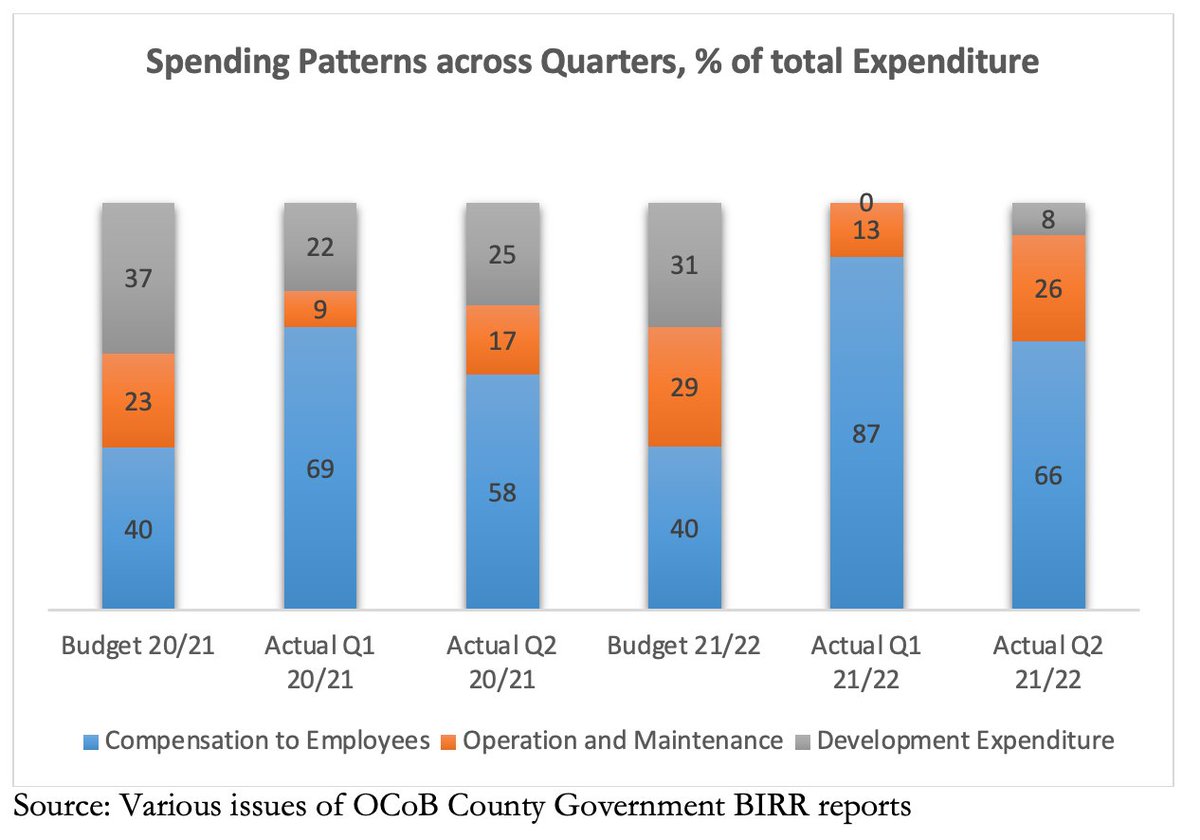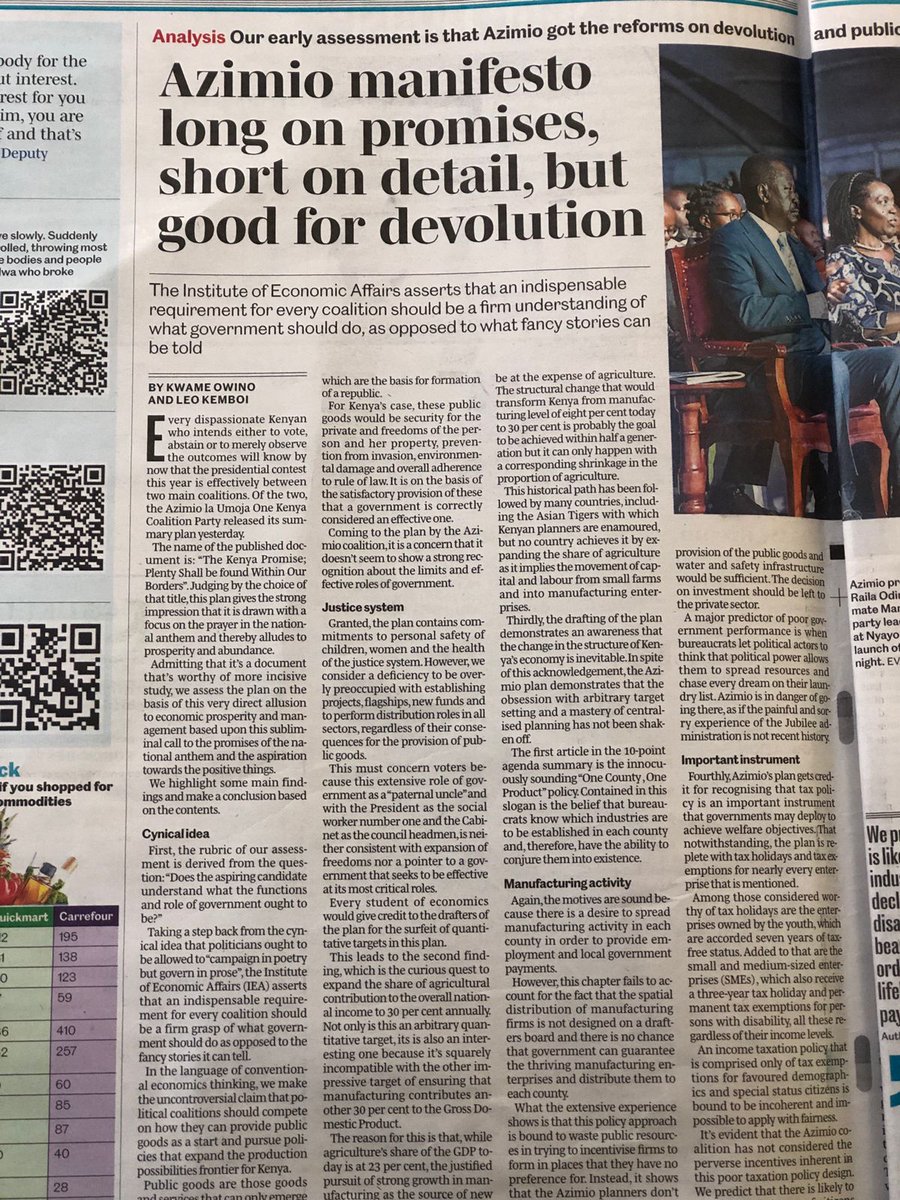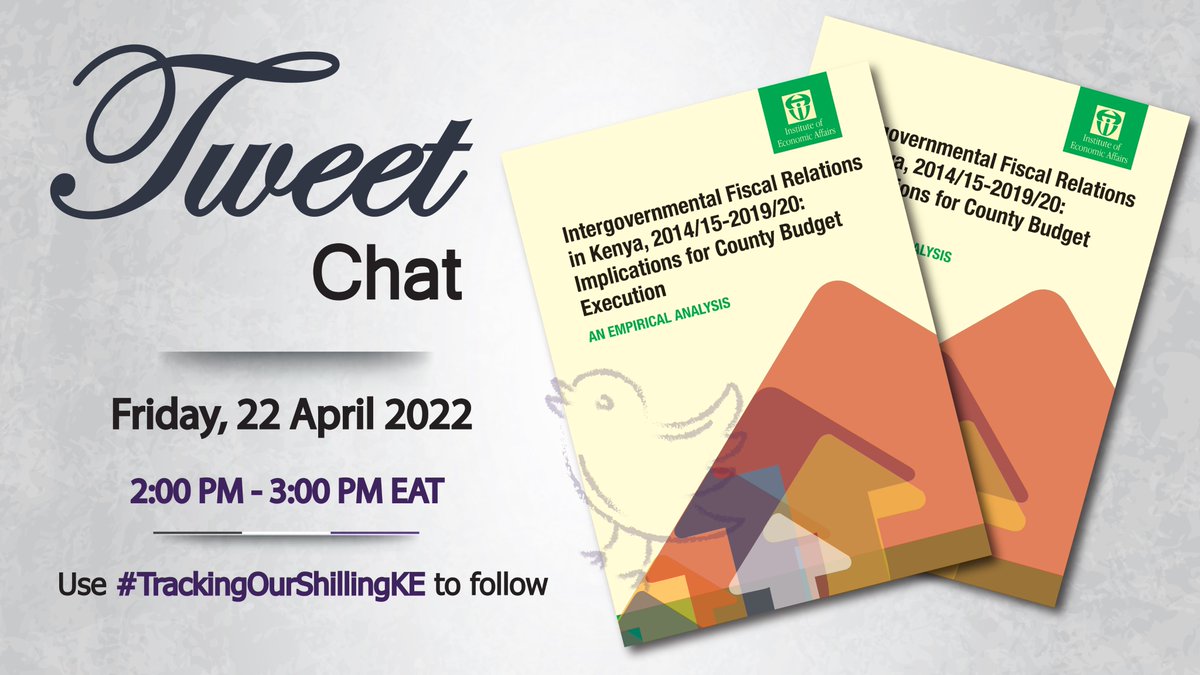
𝙎𝙩𝙖𝙧𝙩𝙞𝙣𝙜 𝙞𝙣 5 𝙈𝙞𝙣𝙨 !!
#TrackingOurShillingKE
@TransformFor
@YouthAliveKenya
@ntakenya
@kefeado
@Oayouthkenya
@KisumuCountyKE
@NAYAKenya
@TinadaOrg
@TIKenya
@inukasuccess
@LeadersChampion
@PodiumAfrika
@KAS_Kenya
#TrackingOurShillingKE
@TransformFor
@YouthAliveKenya
@ntakenya
@kefeado
@Oayouthkenya
@KisumuCountyKE
@NAYAKenya
@TinadaOrg
@TIKenya
@inukasuccess
@LeadersChampion
@PodiumAfrika
@KAS_Kenya

Is @KisumuCountyKE on track in implementation of its budget for FY 2021/22 as was approved by the County Assembly?
#TrackingOurShillingKE
#TrackingOurShillingKE
Kisumu county government is lagging behind implementation of its budget for FY 2021/22.
#TrackingOurShillingKE
🔗ieakenya.or.ke/?wpdmdl=2610
#TrackingOurShillingKE
🔗ieakenya.or.ke/?wpdmdl=2610

As shown 👆, by the end of quarter two (Q2) of FY 2021/22 (July to December 2021), the county managed to spend a third of its annual budget. The expected overall spending by end of Q2 for counties should be at least a half of the annual budget.
#TrackingOurShilingKE
#TrackingOurShilingKE
Notably, there was a slight improvement in budget implementation performance by end of Q2 of 2021/22 compared with the same period in FY 2020/21.
#TrackingOurShillingKE
🔗ieakenya.or.ke/?wpdmdl=2610
@YouthAliveKenya
@TransformFor
@NDI
#TrackingOurShillingKE
🔗ieakenya.or.ke/?wpdmdl=2610
@YouthAliveKenya
@TransformFor
@NDI
Overall if the pace in budget implementation does not pick up in the second half of FY 2021/22, service delivery to residents will be poor.
#TrackingOurShillingKE
🔗ieakenya.or.ke/?wpdmdl=2610
@ntakenya
@siasaplace
@GP_Kenya
@kefeado
@NAYAKenya
#TrackingOurShillingKE
🔗ieakenya.or.ke/?wpdmdl=2610
@ntakenya
@siasaplace
@GP_Kenya
@kefeado
@NAYAKenya
Is @KisumuCountyKE adhering to fiscal responsibility principle rules on allocation of 30% of the annual budget to development programs and 35% to wages and benefits budget allocations?
@TransformFor
@YouthAlive
@ShakirinaYouth
@LeoKemboi
@nyorude
@NAYAKenya
@Chahango1
@TransformFor
@YouthAlive
@ShakirinaYouth
@LeoKemboi
@nyorude
@NAYAKenya
@Chahango1
The Public Finance Management Act, 2012 and its regulations require county governments to comply with two important fiscal responsibility principles in their budgeting and spending. #TrackingOurShillingKE
🔗ieakenya.or.ke/?wpdmdl=2610
🔗ieakenya.or.ke/?wpdmdl=2610
Section 107 (2)(b) & 25(1)(b) respectively, of the PFM Act, 2012 requires that at least 30% of the budget must be allocated for development programs.
& wages and benefits shall not exceed 35% of the county’s total revenue
#TrackingOurShillingKE
🔗ieakenya.or.ke/?wpdmdl=2610
& wages and benefits shall not exceed 35% of the county’s total revenue
#TrackingOurShillingKE
🔗ieakenya.or.ke/?wpdmdl=2610
However as shown in the infographic, the results are mixed regarding adherence to the two key fiscal responsibility principles
#TrackingOurShillingKE
🔗ieakenya.or.ke/?wpdmdl=2610
@IvyKihara
#TrackingOurShillingKE
🔗ieakenya.or.ke/?wpdmdl=2610
@IvyKihara

@KisumuCountyKE adhered to the first fiscal responsibility principle as the development budget share was 31% in FY 2021/22 down from 37% in the previous financial year.
#TrackingOurShillingKE
🔗ieakenya.or.ke/?wpdmdl=2610
#TrackingOurShillingKE
🔗ieakenya.or.ke/?wpdmdl=2610
However, the county is in 𝐯𝐢𝐨𝐥𝐚𝐭𝐢𝐨𝐧 of the second fiscal responsibility principle as the wage bill was 40% of total county revenue for each of the two financial years.
#TrackingOurShillingKE
🔗ieakenya.or.ke/?wpdmdl=2610
@KisumuEveryday
@StepupTogether
@MiwaniCentre
#TrackingOurShillingKE
🔗ieakenya.or.ke/?wpdmdl=2610
@KisumuEveryday
@StepupTogether
@MiwaniCentre
Civil society groups should pursue evidenced based informed policy engagement and advocacy for reforming the county public service
Calls for audit of the payroll to weed out ghost workers and engagements around exploring other quick wins such as voluntary retirement and so on
Calls for audit of the payroll to weed out ghost workers and engagements around exploring other quick wins such as voluntary retirement and so on
Is @KisumuCountyKE maintaining discipline in the management of public funds?
#TrackingOurShillingKE
@YouthAliveKenya @StepupTogether @siasaplace @ntakenya @HOYWIK @LeoKemboi @ASBELKEMBOI7 @Twaweza_Ke @TransformFor
#TrackingOurShillingKE
@YouthAliveKenya @StepupTogether @siasaplace @ntakenya @HOYWIK @LeoKemboi @ASBELKEMBOI7 @Twaweza_Ke @TransformFor
There is huge budgetary pressure for @KisumuCountyKE to meet its 𝙪𝙣𝙘𝙤𝙣𝙩𝙧𝙤𝙡𝙡𝙚𝙙 𝙬𝙖𝙜𝙚 𝙗𝙞𝙡𝙡.
As shown 👇, compensation to employees (wage bill) as a share of the total county budget increased to 𝟲𝟲% by end of Q2 of 2021/22 against the budgeted share of 40%.
As shown 👇, compensation to employees (wage bill) as a share of the total county budget increased to 𝟲𝟲% by end of Q2 of 2021/22 against the budgeted share of 40%.

@CoB_Kenya reports show that by end of FY 2020/21, spending on wages and 𝘀𝗮𝗹𝗮𝗿𝗶𝗲𝘀 𝗮𝗰𝗰𝗼𝘂𝗻𝘁𝗲𝗱 𝗳𝗼𝗿 𝟱𝟯% 𝗼𝗳 𝗰𝗼𝘂𝗻𝘁𝘆 𝗿𝗲𝘃𝗲𝗻𝘂𝗲.
#TrackingOurshillingKE
🔗ieakenya.or.ke/?wpdmdl=2610
@TinadaOrg
@IvyKihara
@YouthAliveKenya
@KisumuEveryday
@TransformFor
#TrackingOurshillingKE
🔗ieakenya.or.ke/?wpdmdl=2610
@TinadaOrg
@IvyKihara
@YouthAliveKenya
@KisumuEveryday
@TransformFor
Implications- Operations and maintenance are starved of funds, as a result, this could lead to a slow down in the running of projects and thus a rise in stalled/incomplete projects, etc
#TrackingOurShilingKE
🔗ieakenya.or.ke/?wpdmdl=2610
@j2mutua @DJattani @WNWamalwa @RaphaelMuya3
#TrackingOurShilingKE
🔗ieakenya.or.ke/?wpdmdl=2610
@j2mutua @DJattani @WNWamalwa @RaphaelMuya3
Civil society vigilance is required on other expenditure trends on County Established Funds (Ksh Million).
Rapid ⬆️of funds, especially if not accompanied by a clear implementation framework and regulations, raises transparency and accountability questions.
#TrackingOurShilingKE
Rapid ⬆️of funds, especially if not accompanied by a clear implementation framework and regulations, raises transparency and accountability questions.
#TrackingOurShilingKE

Besides, there are questions about the clear rationale for establishing funds, similar to throwing funds at problems
#TrackingOurShilingKE
🔗ieakenya.or.ke/?wpdmdl=2610
#TrackingOurShilingKE
🔗ieakenya.or.ke/?wpdmdl=2610
The table shows, Kisumu County's list of Development Projects with the 𝐇𝐢𝐠𝐡𝐞𝐬𝐭 Expenditure.
Hosting of 𝗠𝗮𝗱𝗮𝗿𝗮𝗸𝗮 𝗗𝗮𝘆 Celebrations came with budgetary consequences, causing prioritization of some development projects at the expense of overall budgeted projects.
Hosting of 𝗠𝗮𝗱𝗮𝗿𝗮𝗸𝗮 𝗗𝗮𝘆 Celebrations came with budgetary consequences, causing prioritization of some development projects at the expense of overall budgeted projects.

Link to the entire analysis of 𝐊𝐢𝐬𝐮𝐦𝐮 𝐂𝐨𝐮𝐧𝐭𝐲 Q1 𝐚𝐧𝐝 Q2 𝟐𝟎𝟐𝟏/𝟐𝟐 𝐁𝐮𝐝𝐠𝐞𝐭 𝐈𝐦𝐩𝐥𝐞𝐦𝐞𝐧𝐭𝐚𝐭𝐢𝐨𝐧 𝐑𝐞𝐩𝐨𝐫𝐭
🔗ieakenya.or.ke/?wpdmdl=2610
#TrackingOurShillingKE
🔗ieakenya.or.ke/?wpdmdl=2610
#TrackingOurShillingKE
• • •
Missing some Tweet in this thread? You can try to
force a refresh










